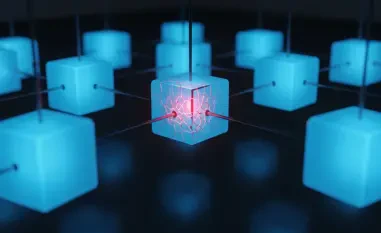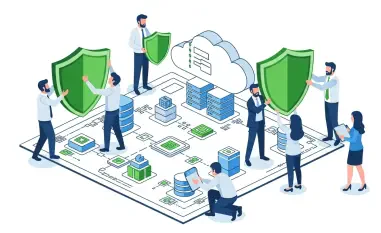Malik Haidar, renowned in the field of cybersecurity, has carved a niche for himself with his deep understanding and application of threat intelligence within large corporations. His approach blends cutting-edge analytics with a keen appreciation of business needs, ensuring that cybersecurity strategies resonate with the core objectives of companies. Today, Malik shares insights into the ever-evolving realm of cybersecurity, where preemptive measures are rapidly overtaking traditional reactive methods.
What motivated the shift from conventional IOCs to the innovative approach of indicators of future attacks, and how did Ken Bagnall’s experience play a role in this evolution?
When IOCs were first introduced, they provided great insights into threats that had already materialized. However, the nature of cyber threats has evolved, demanding a predictive approach. Ken Bagnall’s background, particularly his role at FireEye, provided him with a comprehensive understanding of attacker behavior and the inadequacies of merely reacting post-compromise. This inspired the creation of Silent Push, aimed at anticipating attacks before they occur, enhancing defenses across the board.
Could you elaborate on the concept of indicators of future attacks and how they contrast with traditional indicators of compromise?
IOFA shifts the paradigm from recognizing attacks after they’ve occurred to foreseeing them. Traditional IOCs indicate that an attack has happened—a reactive stance. IOFA, on the other hand, involves identifying activities and infrastructure set up by attackers, suggesting imminent threats. It’s about tracking adversary movements and behaviors before they cause damage, thus allowing organizations to proactively block potential attacks.
How does Silent Push approach internet mapping, and what are the pivotal components of IPS and DNS monitoring that aid in predicting attacks?
Silent Push conducts daily internet mapping to spot changes in IPS and DNS structures. These components are crucial because they often show early signs of an upcoming attack. By closely observing shifts in IP diversity or new DNS entries configured by threat actors, Silent Push can detect patterns that suggest preparation for an attack and provide the intelligence necessary for preemptive action.
In what ways does Silent Push’s proprietary collection mechanism provide an advantage over competitors who purchase data?
Our proprietary collection mechanism ensures we have unhindered access to data without the limitations set by governance on purchased data. This direct access allows us to swiftly map attacker infrastructures, giving us a real-time edge over those reliant on third-party data sources, which might delay detection and response capabilities.
Can you expand on the fingerprint analogy used in IOFA technology for identifying threats?
Think of IOFA technology like a fingerprint identification system. Each attack setup has unique markers—like Fast Flux IP spinning—that, when matched across multiple points, suggest imminent malicious activity. By identifying these distinct patterns or ‘fingerprints’, Silent Push can anticipate attacks and flag them early, allowing companies to bolster defenses proactively.
What specific tactics, techniques, and procedures (TTPs) does Silent Push examine to ascertain the likelihood of an impending attack?
Silent Push scrutinizes various TTPs like IP diversity, DNS changes, and network movements indicative of adversary setups. These methodologies highlight preparatory steps by attackers, enabling detection of potential threats before they escalate. By understanding these behaviors, Silent Push can effectively forecast and counter attacks.
Can you describe how “passive aggressive DNS” functions and its practical benefits over standard passive DNS methods?
Passive aggressive DNS involves actively monitoring DNS entries that exhibit suspicious changes, rather than merely cataloging them passively. This active engagement ensures Silent Push identifies potential threats that might otherwise remain hidden, providing MSSPs with actionable insights to preemptively manage security.
What is the role of global partners in deploying Silent Push’s technology, and how do they enhance your channel ecosystem?
Our partners play a pivotal role in regional deployment and customer interaction. By leveraging their proximity to customers, they enrich our ecosystem with localized expertise and support. This partnership approach helps us scale our operations globally and ensures our technology is effectively integrated into diverse environments.
In what ways can MSSPs and channel partners leverage Silent Push’s technology to improve their threat intelligence and safeguard networks?
Silent Push empowers MSSPs to incorporate advanced threat intelligence into their offerings. Our feeds help them devise blocking strategies and execute threat hunting initiatives. By integrating Silent Push’s technology, MSSPs can offer more robust security solutions, enhancing their ability to prevent and mitigate threats for their clients.
What challenges does Silent Push encounter as it expands, and what strategies are in place to overcome them?
Growth brings challenges like scaling operations and maintaining customer satisfaction. To tackle these, Silent Push is continuously evolving its tech stack and expanding channel partnerships across territories. We focus on building a resilient infrastructure that supports increased demand while ensuring the quality and efficiency of our services.
How does Silent Push integrate with existing security solutions to augment MSSP or customer defenses?
Silent Push seamlessly meshes with existing security solutions through its flexible integration capabilities. It complements traditional systems by adding layers of intelligence, helping MSSPs strengthen their defense mechanisms without overhauling their current setups, thereby enhancing their overall security posture.
What measures are taken to educate stakeholders on the benefits of preemptive security versus the traditional reactive methods?
We emphasize the significance of preemptive security through workshops, detailed briefs, and collaborative sessions with stakeholders. Demonstrating real-world case studies and the effectiveness of preemptive measures helps shift the mindset from reactive to proactive approaches, creating awareness about the need for future-oriented security strategies.
Why do you think IOCs are considered outdated, and how does Silent Push’s strategy provide a more comprehensive defense?
The drawback of IOCs is their retrospective nature—they identify attacks after they’ve happened. Silent Push’s future-focused strategy allows for defenses to be set up before threats materialize. By shifting attention to potential indicators of attack set-up and not just compromise aftermath, organizations can better shield themselves.
How does Silent Push ensure continuous partnership engagement and maintain closeness to its customer base?
We work closely with channel partners to keep them attuned to customer needs, empowering them with the tools and insights necessary for effective engagement. By sharing our expertise and staying connected through mutual objectives and goals, Silent Push ensures alignment in providing top-level security solutions.
What future advancements is Silent Push exploring to further enhance its indicators of future attacks technology?
Silent Push is committed to refining its technologies by delving into machine learning and AI to better detect complex attack patterns. Exploring advanced analytics and predictive modeling will further sharpen our capabilities, ensuring we remain at the forefront in predicting and mitigating potential cyber threats.













